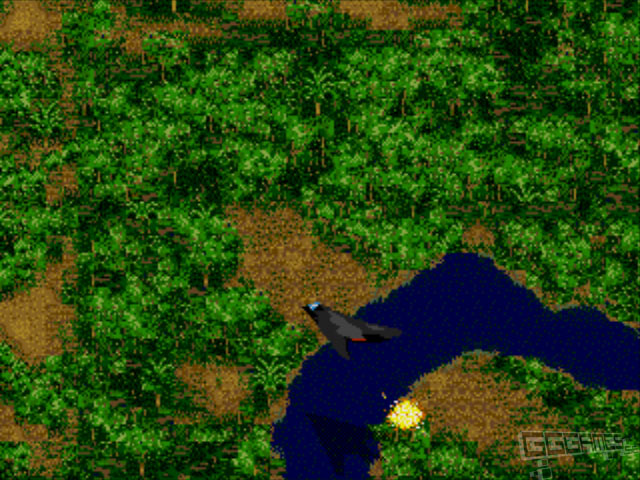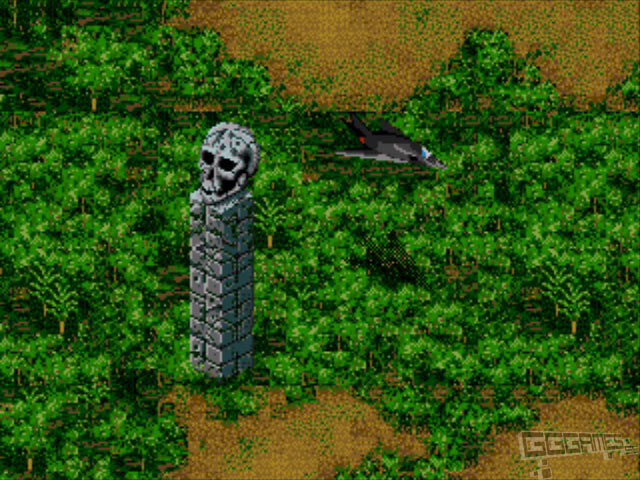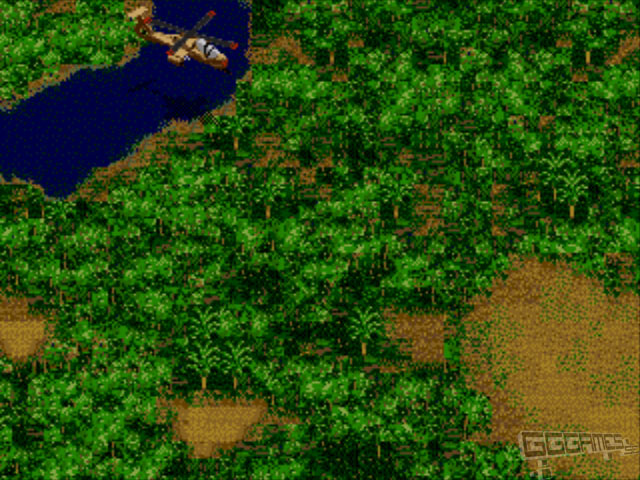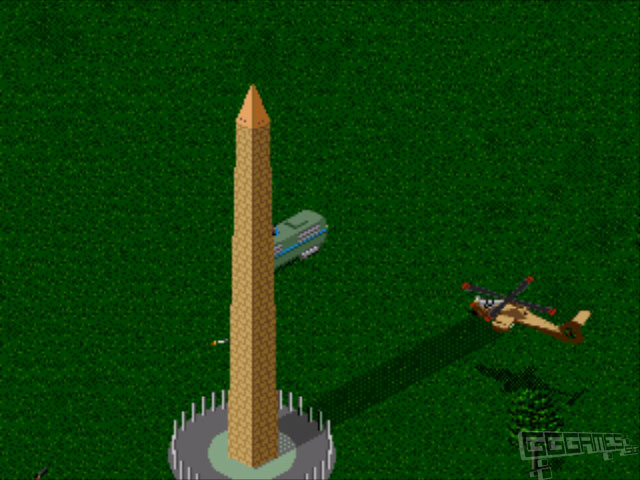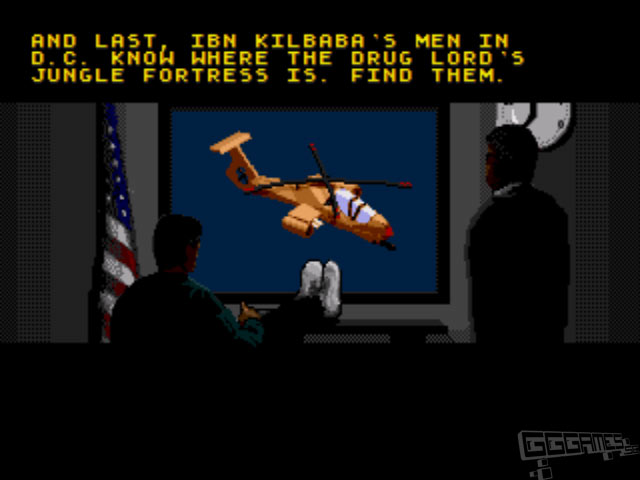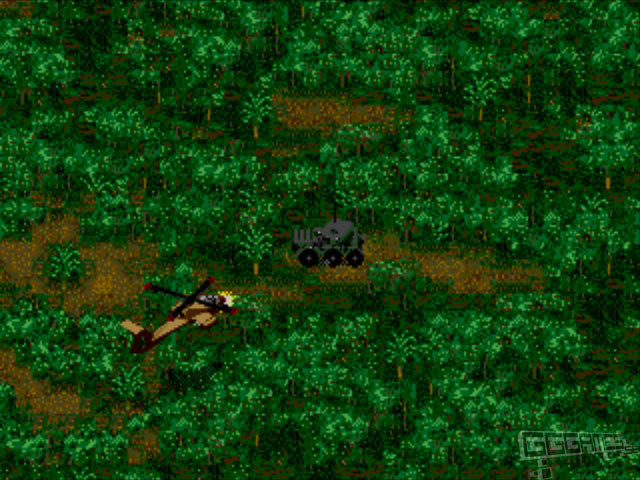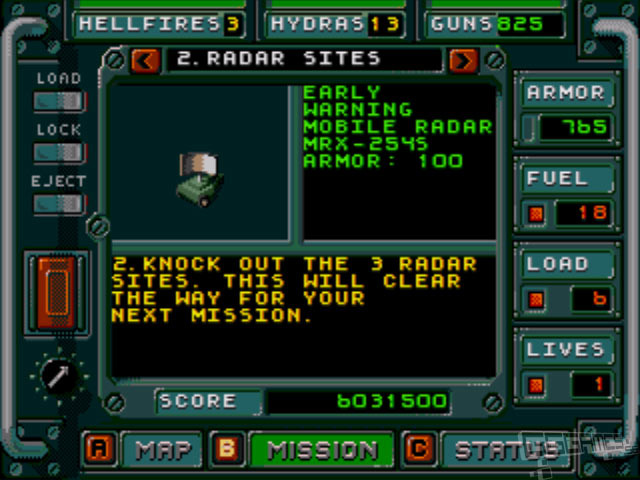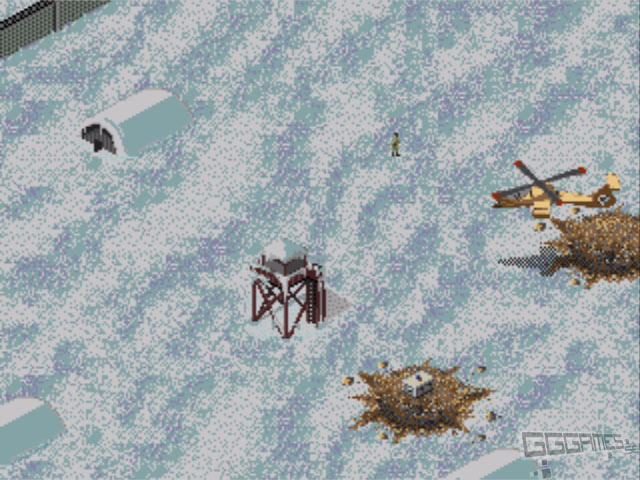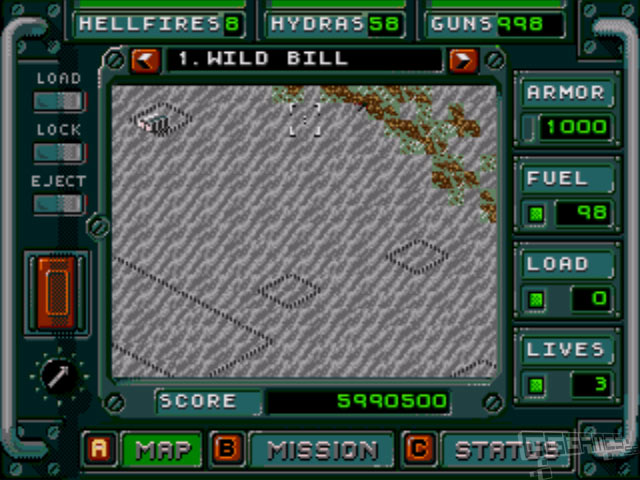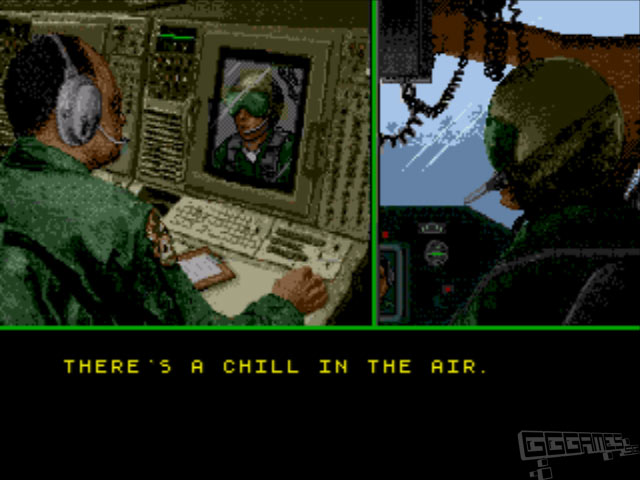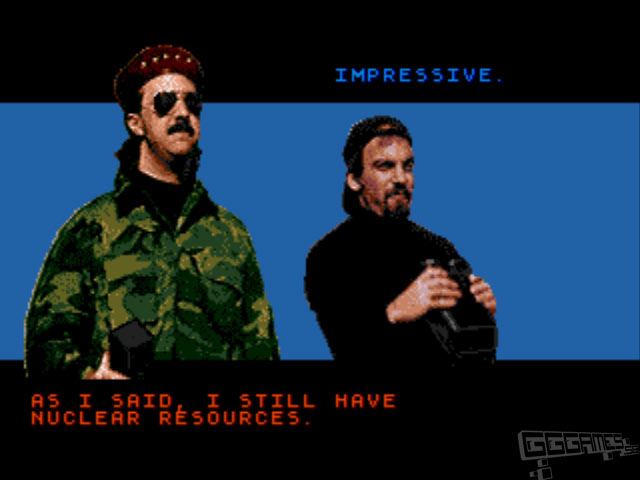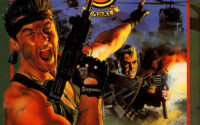Jungle Strike Review
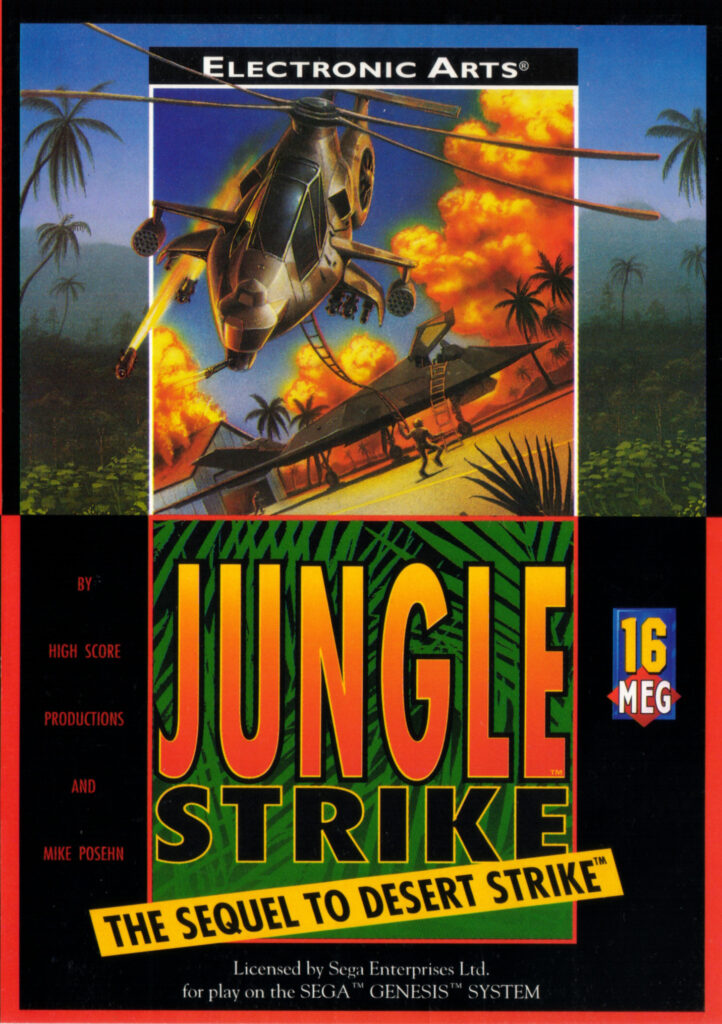
Stressful helicopter wargame where you take on a series of dangerous missions.
Story
The crime lord Carlos Ortega is plotting to blow up the White House as a warning to the American government not to meddle in their drug trade in the pacific. Together with vengeful companions Carlos successfully nukes an island in South America as a test of their new political tool. The US government immediately picks up on the nuclear threat and calls their best men to a special forces meeting in the White House. Intelligence is collected from all possible sources and a plan is soon laid out by the general. This marks the beginning of the mission to find those responsible and bring them to justice. Can America be safe from further attacks and what else do the drug barons have in mind?
The Game
Jungle Strike is a direct sequel to the critically acclaimed Desert Strike released in 1992. Jungle Strike builds upon the same winning formula and continues the plot from the previous game.
This is a strategic action game that takes place in the exotic pacific. The game is played from an isometric perspective and you play piloting various vehicles – mostly an attack helicopter. Each mission takes place on a confined map area with specific mission objectives that you must follow in order to complete the mission as a whole. Doing this will take you to the next mission. As such the goal of the game is to follow orders and your mission objectives can vary, but mostly you will be engaging in various seek and destroy type missions.
Before you begin a mission you’ll be prompted to select a co-pilot that will accompany you on your mission. You won’t actually have a co-pilot that does anything for you though, but the choice does have an impact on how your guns and vehicle behaves – your co-pilot may be trigger happy and cause the guns to fire a little faster, or he can be very accurate with the winch, making it easier to pick up crates. As you progress through the story in the game more co-pilots will be available to you. The difference between them could, in all honesty, be more defined. It doesn’t really matter much which one choose – it’s more a thing of preference.
On the whole this is a very fast paced game. You need to keep a constant eye on your fuel level, weapons and armor supplies. Each mission has a limited amount of these resources so you can’t really mess around too much if you hope to complete the mission. This puts a huge level of stress on you especially in the later missions.
Because of the limited view you have, you need to cross check with the area map almost all the time, which can make for a really chopped up experience. But the area map is very comprehensive and it gives you a much needed time to think about your next move as your fuel isn’t drained while you check the map – in fact the whole game is paused then.
Controls
The controls are dependent on what vehicle you are piloting – it’s fair to say that while none of the vehicles have outright bad controls, you will probably need to spend a few minutes in getting used to their different control schemes. It will take quite a while to learn how to perform the more advanced combat maneuvers such as flying sideways and dodging enemy fire.
Content
There are nine missions in all, and a mission can have up to eight objectives that must be done (often in the correct order). This is a very hard game, because it forces you to replay the mission from the beginning if you fail an objective. Because of this you’ll need to perform your objectives with a high level of precision – and sometimes you have no choice but to find out the hard way how to complete a specific objective.
The mission briefing can be reviewed at anytime during the game, so you won’t need to memorize them. You must, however plan your course of actions very carefully and it helps if you’ve tried the mission before. There usually is no room for improvising because you are also dependent on picking up fuel barrels, ammunition and repair kits for what ever vehicle you happen to pilot – and fuel tends to run out faster than you’d like to think!
After each completed mission you’re given a password that you can use to resume your game from there next time you start the game – with that said you cannot save your progress in mid-mission.
When the game begins you are given three lives. You will be able to accumulate extra lives, and your lives will be carried over to the next mission, so even if you complete a mission but only have one life left, you may have to replay the previous mission in order to get more lives over the next one. Needless to say this makes every life count.
Jungle Strike allows you to play with four different vehicles throughout the game; Boeing/Sikorsky RAH-66 Comanche, F-117 Stealth bomber, a motorcycle and a XL-9 hovercraft. What vehicle you play as isn’t exactly your choice though – it’s tied to the mission that you are playing. Each vehicle has its own feel, strengths and weaknesses so the variety provided there is a nice and a welcomed feature to the game series.
The missions you are assigned to take place in various interesting locations such as Washington D.C., city terrains, jungles, terrorist fortresses, mountains and river lands. You’ll be fighting gun turrets of various kinds and enemy vehicles – all in all there are 16 different types of hostile entities in the game. You’ll quickly learn how to deal with them and which ones are best avoided – but once again this is something you must learn the hard way and that will result in many deaths the first few times around which in turn means that there are more reasons as to why you must replay a mission from the beginning. Make no mistake; the enemies in this game are very mean. Even a lone soldier must be considered a huge threat because you never know when a rocket will come flying your way.
Graphics
Visually Jungle Strike isn’t the greatest. The environments can look a bit dull and bland on some spots but there is some variety from one mission to another. Obviously there are some areas where the landscapes are more detailed and varied, and that’s nice. There’s quite a lot to see in this game when it comes to environments.
The enemies and buildings all look okay and the animation is passable. The biggest let down are the explosions: they look really boring and doesn’t have the impact that an explosion should have in a video game. This is a rather big issue because this game is mostly about blowing things up.
Sound
The music in this game isn’t a huge selling point either. It’s there to set the mood but it’s very plain and forgettable. There is no music playing in the missions, so instead you’ll be listening to the chopper blades and rocket fire. There are some nice samples in the game, but overall the sound is pretty monotonous and predictable.
Summary
Jungle Strike is a very hard game. It requires flawless performance from you if you hope to make any progress in it. This may put many players off, and that’s quite understandable – most players will simply recognize that the game isn’t worth all the hassle. But that doesn’t mean that this is a bad game; it’s just a very stressful experience that demands a certain kind of persistency. It does feel very rewarding when you manage to pull off an entire mission without any major slip-ups and the action can be quite intense.
This is definitely a worthy successor to Desert Strike, but you have to have lots of patience, practice and tolerance to beat it.
